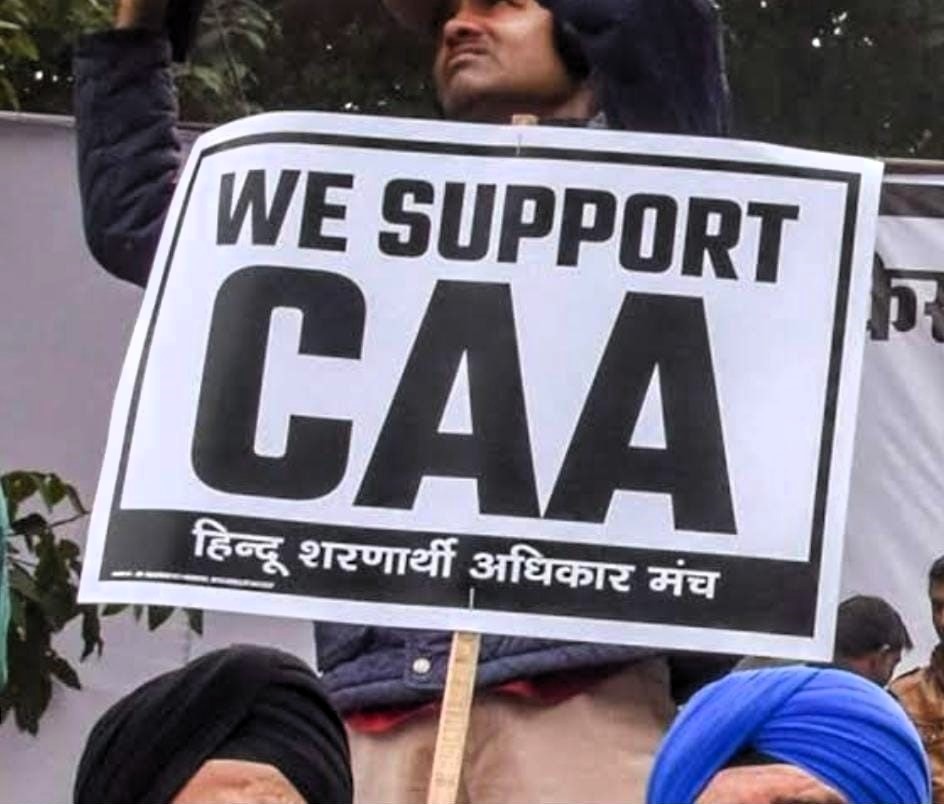In 2019, amidst heated debates and widespread protests, the Modi government introduced the Citizenship Amendment Act (CAA). The legislation aimed to provide expedited citizenship to persecuted minorities from neighboring countries, including Hindus, Sikhs, Buddhists, Jains, Parsis, and Christians, who arrived in India before December 31, 2014. While the intention seemed clear, the ensuing uproar and misinformation painted a complex picture of the CAA.
During those tumultuous times, a friend of mine, N N Sahib, raised a pertinent question: “If Indians do not protect Hindus from neighboring countries, where will they go?” This query encapsulated the crux of the CAA debate, highlighting the plight of persecuted minorities, particularly Hindus, in Pakistan, Bangladesh, and Afghanistan.
Consider the stark decline in the Hindu population of Pakistan, plummeting from 23 percent in 1947 to a mere 3 percent by 2022. Such figures illustrate a distressing reality of religious persecution that has forced many to flee their homelands in search of safety and refuge. The CAA aimed to extend a helping hand to these vulnerable communities, offering them a chance at a better life in India, a nation historically known for its inclusivity and pluralism.
However, amidst the cacophony of voices, the narrative surrounding the CAA became muddled. Opposition parties labeled it as anti-Muslims, sowing seeds of fear and confusion among the populace. But let’s dissect the facts: the CAA does not target Muslims nor does it threaten the citizenship of any Indian, irrespective of their religion. It solely focuses on granting citizenship to persecuted minorities who have sought shelter in India.

Critics have questioned the timing of the CAA’s introduction, especially in the run-up to elections. While valid concerns regarding political motivations may arise, it’s crucial to separate the legislative intent from political maneuvering. The urgency to address the plight of persecuted minorities cannot be overstated, regardless of the timing.
In conclusion, the Citizenship Amendment Act, at its core, is a humanitarian gesture aimed at providing succor to those fleeing religious persecution. By understanding the nuances of the legislation and dispelling misconceptions, we can foster a more informed discourse and uphold the values of compassion and tolerance that define our nation. As we navigate the complexities of citizenship and immigration, let us not lose sight of our shared humanity and the imperative to stand in solidarity with the oppressed, regardless of creed or caste.

Let’s engage in dialogue, not discord, and strive towards a more inclusive and compassionate society where the rights and dignity of every individual are respected and upheld.
What is CAA
The Citizenship (Amendment) Act, 2019, seeks to grant Indian citizenship to refugees who had sought shelter in India before 31st December 2014, due to religious persecution in three neighbouring countries.
- 3 countries – Afghanistan, Pakistan and Bangladesh,
- 6 minority communities – Hindus, Sikhs, Buddhists, Jains, Parsis and Christians
Key Issues
- Removes legal barriers to rehabilitation and citizenship.
- To give a dignified life to refugees who have suffered for decades.
- Citizenship rights will protect their cultural, linguistic, and social identity.
- It will also ensure economic, commercial, free movement, and property purchase rights.
Many misconceptions have been spread regarding the Citizenship Amendment Act
- This is the law to give citizenship, CAA will not take away citizenship of any Indian citizen, irrespective of religion.
- This Act is only for those who have suffered persecution for years and have no other shelter in the world except India.
The Constitution of India grants us the right to provide religious persecuted refugees with fundamental rights and to grant citizenship from a humanitarian perspective.
The implementation of the Citizenship Amendment Act was delayed due to the Covid pandemic. But now we are implementing it…
